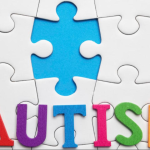One of the behaviors parents may notice in their children is the repeated action of pulling a parent’s hand—whether at home or in public places. While this may seem simple or even cute at first, it could reflect important aspects of the child’s social, psychological, or language development.
Possible Reasons Why a Child Pulls Their Parent’s Hand
There are several potential reasons behind this behavior, including:
1. A Form of Non-Verbal Communication
If a child is not yet using language effectively or is experiencing a speech delay, they may resort to pulling their parent’s hand as a way to express a need—such as wanting water, food, or to play.
2. Seeking Safety and Reassurance
Some children pull their parent’s hand when feeling scared, anxious, or unsettled in an unfamiliar environment. This may be a way of seeking comfort and a sense of security.
3. A Call for Attention
When children feel their parents are distracted or not engaging with them, they may use physical cues like hand-pulling to get attention.
4. A Way to Guide or Lead the Parent
Children may pull a parent’s hand to take them somewhere specific or point out something they want to explore, especially between the ages of 1.5 to 3 years.
5. A Repetitive Behavior Linked to a Developmental Disorder
In some cases, frequent and intense hand-pulling can be an early sign of a developmental disorder, such as autism spectrum disorder (ASD)—especially if accompanied by difficulties in communication, imaginative play, or social interaction.

When Should You Be Concerned?
It’s important to consult a specialist if:
- The child is over two years old and still not speaking or using simple words.
- Hand-pulling is the primary method of communication.
- Parents notice other social interaction challenges or repetitive, limited interests.
- The child does not use other social cues like pointing or making eye contact.
What Is the Appropriate Treatment?
Now that we’ve explored why a child might pull a parent’s hand, let’s look at effective ways to address it:
1. Get a Professional Evaluation
It’s essential to have the child assessed by a specialist in Applied Behavior Analysis (ABA) or a speech therapist to evaluate their communication skills.
2. Encourage Verbal or Alternative Communication
Children can be taught to use simple words or alternative communication tools like Picture Exchange Communication System (PECS) cards or sign language.
3. Teach Appropriate Requesting Skills
Train the child to say “I want” or point with their finger instead of relying on hand-pulling.
4. Promote Independence and Reduce Physical Prompting
Encourage the child to use more mature verbal or non-verbal behaviors by reinforcing positive communication attempts.
Conclusion
A child pulling their parent’s hand can be a normal behavior at certain developmental stages. However, if it becomes excessive, it may signal a language delay or developmental issue. Early intervention and professional assessment are crucial steps in understanding the underlying cause and addressing the behavior appropriately.
Latest Articles
How to Deal with a Child’s Aggression at School: Causes and Solutions
Aggressive behaviors at school are among the most concerning challenges... More
Published on: May 13, 2025
How Can I Reduce My Child’s Screen Time? A Practical Guide to Limiting TV, Phones, and Tablets
In today’s digital age, screens have become an inseparable part... More
Published on: May 13, 2025
Why Does My Child Grind Their Teeth? Causes and Treatment
Some parents may notice their child making a grinding or... More
Published on: May 13, 2025
10 Tips for Raising a Strong, Confident, and Leadership-Oriented Child | With Practical Examples
Do You Dream of Seeing Your Child Confident, Responsible, and... More
Published on: May 13, 2025
Related News
The Knowledge Center provides the latest health insights to improve quality of life







